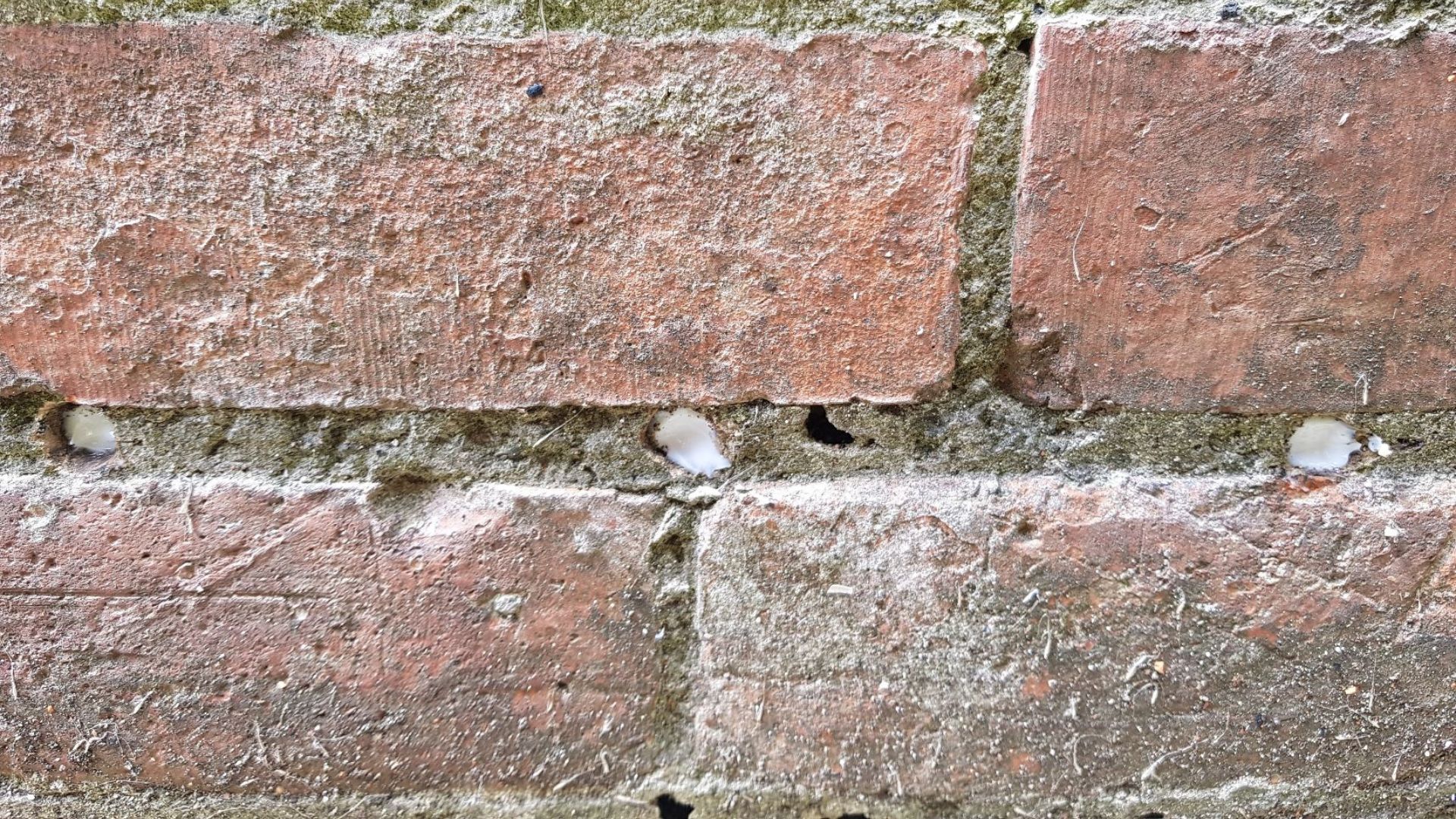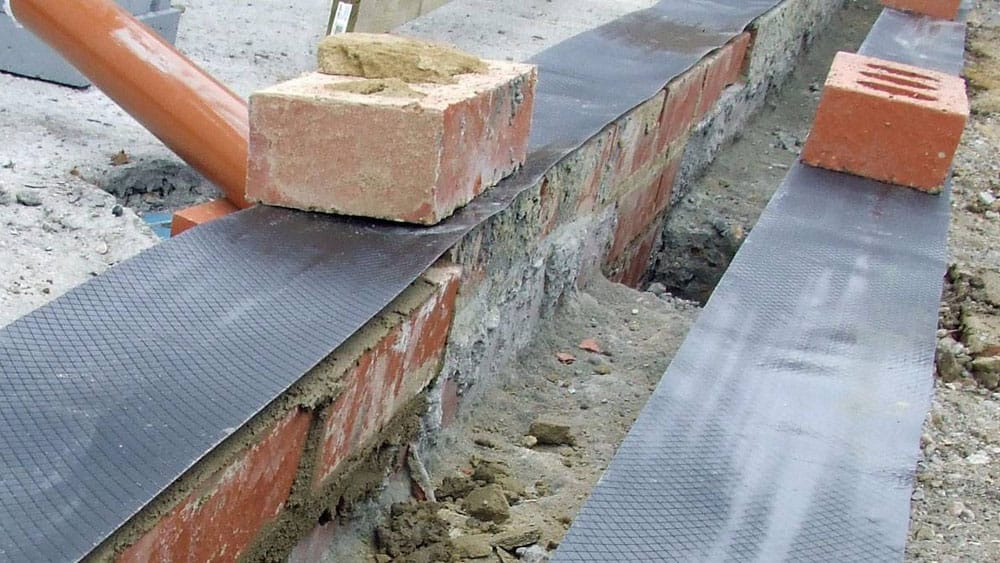Comprehending the Relevance of Damp Proofing in Averting Structural Damage
Wet proofing works as a necessary protection versus wetness seepage in buildings. This protective procedure can protect against substantial architectural damage, yet lots of home proprietors remain unaware of its relevance. Recognizing the indicators of moisture and recognizing the various solutions readily available can be imperative. Overlooking wet proofing can lead to serious effects. What are the particular risks and remedies that homeowner should take into consideration?
What Is Damp Proofing and Exactly How Does It Function?
Wet proofing offers as an important obstacle versus moisture intrusion in structures. damp specialist newcastle. This process entails using details materials and techniques to prevent water from permeating wall surfaces, floors, and other structural aspects. Usually, moist proofing can be accomplished with the installation of damp proof membrane layers, finishings, or making use of specialized sealants.These methods function by developing a protective layer that hinders wetness activity, making sure that the interior setting continues to be healthy and dry. Moist proofing is especially vital in areas susceptible to high humidity or groundwater, as it helps keep the stability of the framework over time.Moreover, effective damp proofing adds to energy efficiency by stopping heat loss associated with damp environments. By attending to possible wetness concerns before they escalate, damp proofing functions as an aggressive measure in safeguarding buildings from the destructive impacts of water damage, inevitably extending their lifespan and keeping their worth
Usual Indications of Moisture in a Building
Moisture issues within a structure can manifest with a number of recognizable indications that indicate the visibility of moisture. One prominent indicator is the look of water discolorations on ceilings or walls, which frequently suggests dampness seepage. Furthermore, bubbling or peeling off paint can suggest that excess moisture is entraped below the surface area, resulting in degeneration. One more typical indication is the existence of mold and mildew and mold, which flourish in damp problems and can usually be identified by their moldy odor. An increase in humidity degrees can trigger condensation on windows and various other surface areas, highlighting wetness troubles. Finally, irregular or deformed floor covering may signify underlying wetness that jeopardizes structural honesty. Identifying these indications early can help mitigate prospective damages and keep a safe living setting. Regular assessments and prompt action are important in dealing with wetness issues prior to they escalate.
The Risks of Ignoring Damp Proofing
Overlooking damp proofing can lead to considerable risks to a structure's structural integrity, as wetness build-up might weaken walls and structures. Additionally, extended dampness produces an atmosphere for mold growth, posing significant health and wellness hazards to passengers. Dealing with these threats is necessary for ensuring both safety and long life of the building.
Architectural Stability Hazards
They subject their residential properties to considerable architectural integrity threats when house owners forget the importance of effective damp proofing. Extended dampness infiltration can bring about the advancement of mold, which weakens fundamental elements and can endanger total stability. Additionally, excess wetness can erode concrete and brickwork, leading to cracks and architectural failings. Wood components are particularly vulnerable; they can rot and lose load-bearing capability, posturing severe threats to the building's structure. In addition, without treatment wet conditions may draw in parasites, such as termites, which even more worsen structural deterioration. Eventually, ignoring wet proofing procedures can lead to costly fixings and potential security dangers, highlighting the crucial function of proactive damp administration in maintaining the honesty of property homes.
Carcinogen Problems
How can an apparently minor oversight result in major wellness risks? Ignoring moist proofing can produce an atmosphere conducive to mold and mildew growth, which positions significant health and wellness threats. Mold and mildew spores can cause sensitive responses, respiratory concerns, and other wellness difficulties, particularly in susceptible populations such as children, the elderly, and people with pre-existing problems. Furthermore, persistent wetness can draw in bugs like pests and rodents, which lug illness that further jeopardize health. The visibility of dampness additionally adds to a decrease in interior air quality, exacerbating asthma and various other respiratory system conditions. The failure to attend to wet issues not only threatens structural honesty but additionally jeopardizes the wellness of owners, highlighting the crucial need for reliable wet proofing measures.
Different Sorts Of Damp Proofing Solutions
Although numerous factors can add to damp problems in buildings, selecting the proper moist proofing option is essential for protecting architectural honesty. A number of alternatives are readily available, each tailored to particular conditions.One usual solution is a damp-proof membrane (DPM), normally constructed from polyethylene or asphalt, which is installed in walls and floorings to stop moisture ingress. One more alternative is damp-proof training courses (DPC), which are layers of water-proof material put within wall surfaces to obstruct increasing damp.Chemical damp proofing includes infusing waterproofing chemicals into walls to develop an obstacle against wetness. Additionally, exterior therapies such as tanking, which entails using a water resistant layer to the beyond structures, can be effective in avoiding water penetration.Each option has its advantages and is picked based on the building's details issues, ecological problems, and long-lasting upkeep factors to consider, guaranteeing suitable defense versus damp-related damage.

The Expense of Damp Damage vs. Avoidance
Recognizing the economic effects of damp damage compared to prevention highlights the importance of positive measures. The expenses connected with moist damage can be considerable, consisting of fixings to structural aspects, mold remediation, and possible health-related expenses. House owners may deal with significant monetary stress if substantial damages happens, resulting in increased insurance premiums and shed residential or commercial property value.In contrast, purchasing moist proofing remedies is typically far extra economical. Preliminary expenditures for prevention methods, such as setting up damp-proof membranes or improving drainage systems, are usually exceeded by the long-lasting savings from staying clear of expensive fixings. Additionally, stopping wet problems can enhance a residential or commercial property's total value and appeal, making it a wise investment. When examining the cost of wet damages versus prevention, it becomes clear that taking proactive actions can secure monetary interests and preserve the integrity of the residential or commercial property in time.
Picking the Right Damp Proofing Method for Your Home
Which moist proofing technique is most suitable for a certain building usually relies on numerous factors, consisting of the building's age, existing dampness problems, and regional environmental problems. For older structures, typical methods such as asphalt membranes or cementitious finishings might be extra reliable, as they can supply a robust obstacle versus climbing moist. On the other hand, newer structures may gain from modern remedies like infused damp-proof programs, which are less intrusive and can be customized to certain wetness challenges.Additionally, homes in locations with high water tables or hefty rainfall may require advanced methods, such as cavity wall surface drain systems or outside waterproofing. Property owners ought to likewise think about the details materials made use of in their structure's construction, as some techniques might not work. Eventually, a thorough evaluation by a specialist can direct residential or commercial property proprietors in selecting the most reliable moist proofing technique customized to their unique scenarios.
Keeping Your Damp Proofing System Gradually
Normal maintenance of a damp proofing system is vital for guaranteeing its lasting performance and securing a property from moisture-related damage. Homeowner need to perform routine examinations to recognize any indicators of wear or compromise in the moist proofing layer. This consists of checking for fractures, peeling paint, or mold and mildew growth, which might show dampness intrusion.Additionally, it is advisable to tidy rain gutters and downspouts frequently to protect against water buildup around the foundation. If degeneration is observed.Engaging expert services for periodic evaluations can further enhance the resilience of the system, reapplying sealants or membrane layers might be needed. These experts can offer insights into possible vulnerabilities and recommend prompt fixings.
Regularly Asked Concerns
The Length Of Time Does Damp Proofing Treatment Last Before Requiring Repair Services?
The long life of wet proofing treatment generally varies from 10 to 30 years, depending on factors such as the approach made use of, environmental problems, and upkeep practices. Normal examinations can assist establish when repair services may be necessary.
Is Do It Yourself Damp Proofing Effective Contrasted to Specialist Providers?
The efficiency of do it yourself moist proofing differs substantially. mould removal newcastle. While some individuals may attain satisfactory results, professional services typically assure thorough remedies, leveraging expertise and top quality materials to stop future concerns extra dependably than the majority of DIY attempts
Can Damp Proofing Improve Indoor Air High Quality?
The question of whether wet proofing can boost interior air quality emerges frequently. Effective wet proofing reduces dampness levels, consequently minimizing mold growth and allergens, inevitably contributing to a much healthier indoor atmosphere for owners.
Exist Details Laws for Damp Proofing in Various Locations?
Rules for damp proofing vary by area, frequently affected by neighborhood structure codes and environmental conditions. Conformity guarantees efficient dampness control, advertising and protecting structures safety, which highlights the need for adherence to these details policies.

What Are the Long-Term Advantages of Proper Damp Proofing?
The lasting advantages of correct wet proofing consist of boosted structural integrity, decreased upkeep prices, enhanced interior air high quality, and enhanced building worth. These advantages contribute to a much healthier living atmosphere and prolonged life expectancy of buildings. Usually, wet proofing can be achieved via the setup of moist evidence membranes, finishes, or the use of specialized sealants.These techniques work by developing a safety layer that hinders moisture activity, making sure that the interior environment stays completely website dry and healthy. Damp proofing is specifically crucial in areas susceptible to high humidity or groundwater, as it aids keep the stability of the framework over time.Moreover, reliable moist proofing adds to energy effectiveness by avoiding heat loss connected with wet environments. Neglecting damp proofing can lead to substantial dangers to a structure's structural integrity, as moisture buildup might weaken walls and structures (mould treatment newcastle). Various aspects can contribute to damp problems in structures, choosing the ideal moist proofing option is necessary for preserving architectural integrity. Which damp proofing method is most appropriate for a specific residential or commercial property commonly depends on numerous variables, including the building's age, existing wetness problems, and neighborhood environmental problems